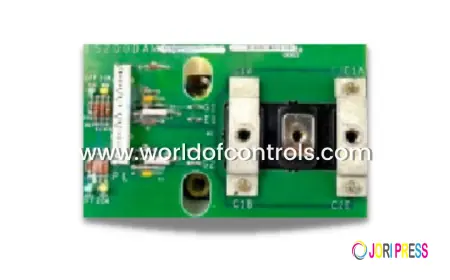Facing Connectivity Issues? Here’s How an RS-485 to Ethernet Media Converter Solves Them
RS-485 to Ethernet Converter helps fix network connectivity issues, ensuring seamless data communication and stable industrial connections.

In modern industrial and automation ecosystems, data connectivity is critical. Every sensor, controller, and programmable logic controller (PLC) needs to communicate efficiently with centralized systems for monitoring, analysis, and control.
However, a major problem arises — most of these legacy industrial devices still operate using RS-485, a serial communication protocol that is robust but limited in range, speed, and compatibility with modern Ethernet-based systems.
To overcome these issues, organizations use an RS-485 to Ethernet Media Converter — a compact but powerful device that bridges the gap between old serial systems and today’s high-speed Ethernet networks. It allows you to keep your existing RS-485 equipment while gaining the speed, scalability, and accessibility of Ethernet communication.
Understanding the Connectivity Challenges
Before diving into how the RS-485 to Ethernet Media Converter solves connectivity issues, let’s first understand what makes these problems so common.
1. Legacy Devices and Modern Networks Don’t Speak the Same Language
RS-485 is a serial communication standard primarily used for connecting devices like PLCs, energy meters, sensors, and building automation controllers. It was designed in an era where devices were physically close, and data transmission was straightforward.
On the other hand, modern systems use Ethernet (TCP/IP) — a faster, standardized communication medium ideal for cloud integration, IoT platforms, and real-time analytics.
However, these two communication types are inherently incompatible — one transmits serial data, and the other works on packets of data over IP.
Thus, legacy devices cannot directly connect to Ethernet networks, resulting in data silos and manual monitoring.
2. RS-485’s Range Limitation
While RS-485 supports long-distance communication compared to RS-232, its range is limited to about 1200 meters under ideal conditions. Beyond that, signal strength drops, and interference increases — especially in industrial environments with heavy machinery and electromagnetic noise.
This means organizations struggle to connect devices located far apart, such as in oil refineries, smart grids, or distributed manufacturing plants.
3. Slow Data Speeds Create Bottlenecks
RS-485 communication typically runs at baud rates between 9.6 kbps and 115.2 kbps, depending on the distance and cable quality. While sufficient for basic control signals, it falls short for modern applications that require high-speed data transfer for real-time dashboards, predictive analytics, and automation systems.
This creates latency issues, where delays in data transmission can lead to slower decision-making, inefficiencies, or even operational risks.
4. Limited Remote Access and Control
Traditional RS-485 networks require on-site monitoring. Engineers need to physically connect laptops or devices to check performance or troubleshoot issues. In an era of remote work, cloud analytics, and centralized control, this limitation prevents organizations from fully leveraging the power of IoT and smart systems.
What Is an RS-485 to Ethernet Media Converter?
An RS-485 to Ethernet Media Converter is a specialized device that translates data between two different communication protocols — serial (RS-485) and Ethernet (TCP/IP).
It acts as a bridge that allows old RS-485 devices to transmit data over Ethernet networks. In technical terms, it encapsulates RS-485 frames into Ethernet packets, enabling communication between legacy field devices and modern IP-based infrastructure.
Key Technical Function:
-
Input: RS-485 serial signals
-
Output: Ethernet TCP/IP packets
-
Purpose: Protocol conversion without modifying existing hardware
This means your existing serial devices can now:
-
Communicate over LAN/WAN networks
-
Be accessed remotely via web servers or SCADA systems
-
Integrate directly into IoT and cloud-based monitoring platforms
How the RS-485 to Ethernet Media Converter Solves Connectivity Issues
Let’s explore, in detail, how this device addresses and eliminates real-world connectivity challenges across industrial networks.
1. Integrates Legacy Devices into Modern Systems
Most industrial devices, like programmable logic controllers (PLCs), meters, and sensors, rely on RS-485 communication. Replacing these with Ethernet-compatible models can be prohibitively expensive.
The RS-485 to Ethernet media converter eliminates the need for hardware upgrades by translating serial data into Ethernet-compatible packets.
This allows existing RS-485 devices to:
-
Communicate with modern monitoring systems
-
Connect to cloud platforms or SCADA software
-
Integrate with IoT gateways for real-time control
Result: You maintain your current devices while gaining advanced monitoring, control, and automation capabilities.
Example: A manufacturing plant with dozens of RS-485-based temperature sensors can connect all of them to a centralized monitoring system through Ethernet — without replacing a single sensor.
2. Extends Communication Distance Without Signal Loss
Ethernet networks can transmit data over kilometers when combined with network switches, routers, or fiber optics — far exceeding RS-485’s limitations.
By converting RS-485 signals into Ethernet packets, the converter ensures long-distance, high-quality communication between devices, even across different buildings or remote facilities.
Example: An energy company can connect meters installed across a city’s grid to a central control center using Ethernet, enabling real-time power monitoring.
Result: Reliable data transfer across long distances with minimal interference.
3. Increases Data Transfer Speed and System Responsiveness
Ethernet supports data speeds of 10/100/1000 Mbps or higher, making it ideal for real-time industrial applications. When RS-485 data is converted to Ethernet, it travels at much faster rates, ensuring:
-
Real-time monitoring
-
Quicker control signal response
-
Reduced latency across systems
This speed upgrade enhances overall system efficiency and data reliability.
Result: Faster decision-making, real-time analytics, and smoother machine coordination.
4. Enables Remote Monitoring and Control
The most significant advantage of converting RS-485 to Ethernet is remote accessibility. Once RS-485 devices are connected to an Ethernet network, engineers can:
-
Access them through web dashboards or mobile apps
-
Perform diagnostics remotely
-
Update firmware or configurations
-
Receive alerts from anywhere via the internet
Example: An industrial facility can monitor machine performance and alarms remotely through an IoT cloud interface — saving travel time and enabling 24/7 monitoring.
Result: Reduced maintenance costs, faster issue resolution, and improved operational uptime.
5. Enhances Data Security and Reliability
RS-485 is a basic communication protocol that lacks built-in security mechanisms. When data is transmitted through Ethernet, you can leverage:
-
Firewalls
-
VPN connections
-
Encryption protocols
-
Network authentication
This ensures secure data exchange and protection against unauthorized access, which is crucial in industrial control and IoT networks.
Result: Enhanced security, integrity, and reliability of industrial data transmission.
6. Simplifies Network Scalability
As organizations grow, they often need to connect additional devices or systems. RS-485 networks are daisy-chained, making expansion complex.
With an RS-485 to Ethernet converter, you can easily connect more devices to the existing Ethernet network using switches or routers — with minimal reconfiguration.
Example: A factory adding new sensors or PLCs can simply connect them to Ethernet ports or use additional converters.
Result: Effortless scalability without downtime or rewiring.
Key Features to Look For in an RS-485 to Ethernet Media Converter
When selecting the ideal converter for your industrial or automation needs, consider these detailed factors:
|
Feature |
Description |
|
Protocol Support |
Compatibility with Modbus RTU/TCP, BACnet/IP, and other serial-to-Ethernet protocols ensures versatility. |
|
Industrial-Grade Design |
Look for rugged, vibration-resistant enclosures suitable for harsh environments. |
|
Plug-and-Play Setup |
Devices with auto-baud rate detection and simple web interfaces save setup time. |
|
EMI & Surge Protection |
Protects communication integrity in electrically noisy environments. |
|
Multiple RS-485 Ports |
Enables simultaneous connection of multiple serial devices. |
|
Dual Power Inputs |
Ensures reliability in case of a power failure. |
|
DIN-Rail Mounting |
Simplifies installation within control panels or racks. |
Industry-Wise Applications
The versatility of RS-485 to Ethernet media converters makes them essential across numerous sectors:
|
Industry |
Use Cases |
|
Manufacturing |
Machine-to-machine communication, process control, SCADA integration |
|
Energy & Utilities |
Smart metering, substation control, remote grid monitoring |
|
Building Automation |
HVAC, lighting, and access control systems |
|
Oil & Gas |
Pipeline monitoring, safety systems, remote valve control |
|
Transportation |
Intelligent traffic control, railway signaling |
|
Smart Cities |
Smart lighting, water management, environmental monitoring |
Real-World Case Study
Scenario: A food processing plant had dozens of RS-485-based controllers distributed across different production zones. Technicians manually collected performance data, causing inefficiencies.
Solution: They installed RS-485 to Ethernet media converters to connect each controller to the central monitoring system via Ethernet.
Results Achieved:
-
100% centralized data collection
-
25% faster response to machine faults
-
20% reduction in energy consumption through improved monitoring
This upgrade allowed the company to achieve Industry 4.0-level visibility without replacing existing machinery.
Advantages at a Glance
-
Seamless integration between RS-485 and Ethernet networks
-
Long-distance, interference-free communication
-
Real-time monitoring and data visualization
-
Enhanced network security
-
Cost-effective modernization of existing infrastructure
-
Scalable and future-ready connectivity
Conclusion
Connectivity defines efficiency in industrial systems. Legacy RS-485 devices, while reliable, limit communication speed, scalability, and accessibility. The RS-485 to Ethernet Media Converter is the perfect bridge that connects traditional serial systems to the modern digital world.
It enables faster data exchange, secure communication, remote access, and cost-efficient scalability, allowing businesses to step confidently into the era of smart automation and IoT.
For industries looking to future-proof their systems without replacing legacy hardware, this device is not just a solution — it’s a strategic investment in long-term operational excellence.
FAQs
1. What does an RS-485 to Ethernet Media Converter do?
It converts RS-485 serial communication into Ethernet packets, allowing legacy devices to communicate with modern IP-based networks.
2. Is it compatible with Modbus RTU and Modbus TCP?
Yes. Most converters seamlessly convert Modbus RTU (RS-485) to Modbus TCP (Ethernet), enabling communication with SCADA systems.
3. Can it work in harsh industrial environments?
Yes. Industrial-grade converters come with metal enclosures, surge protection, and wide temperature ranges for reliable performance.
4. How does it enable remote monitoring?
By converting data to Ethernet, the converter allows devices to be accessed over LAN, WAN, or cloud platforms for real-time monitoring.
5. Do I need special software to configure it?
Not necessarily. Many converters come with web-based interfaces or plug-and-play functionality for easy configuration.
What's Your Reaction?
 Like
0
Like
0
 Dislike
0
Dislike
0
 Love
0
Love
0
 Funny
0
Funny
0
 Angry
0
Angry
0
 Sad
0
Sad
0
 Wow
0
Wow
0














































